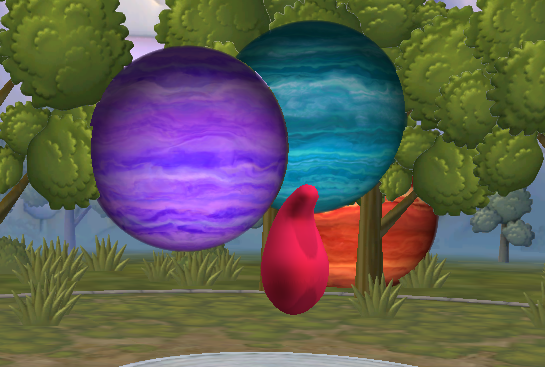Swarm: The effects system
How to spawn effects.
For effects such as particles, decals, etc Spore uses a custom engine called Swarm. Everything related to effects is in the Swarm namespace.
Effects are a collection of components with different attributes, e.g. spawn 10 red particles here, move a model in this direction,... You can create your own effects (or discover how existing ones are made) with SporeModderFX, more information here: https:/
Effects are uniquely identified with an ID. But keep in mind that this ID is only used to identify the structure of the effect itself: you can have multiple instances of the same effect at the same time.
Spawning effects
The basic operation that can be done with Swarm is spawning an instance of an effect, and that is done with the EffectsManager. First you have to declare an intrusive pointer to the Swarm::IEffect class, which is where the effect will be stored. Then you call the CreateVisualEffect() method with the ID of the effect. This method returns true if the effect was sucessfully created; it's good practice to check it before doing anything with it to avoid crashes:
IVisualEffectPtr effect; if (EffectsManager.CreateVisualEffect(id("SG_ufo_scan_HitGround"), 0, effect)) { // This will only be executed if the effect existed and a new instance was created }
Now, with just this the effect will not show yet. You have to call Start() to make it show; similarly, you can kill it anytime by calling Stop().
IVisualEffectPtr effect; if (EffectsManager.CreateVisualEffect(id("SG_ufo_scan_HitGround"), 0, effect)) { effect.Start(); }
Transforming the effects
With what you learned before, the effects will always spawn at the same position. Obviously, this is not what we want. The effect class has a method called SetSourceTransform() that allows us to move, scale and rotate the effect. This takes a Transform object; for more information on how it works, check the math tutorial.
// This set the scale of the effect to 0.5 (so it will be half the original size) // and moves it one unit up. As you can see, transformations can be concatenated effect->SetSourceTransform(Transform().SetScale(0.5f).SetOffset(0, 0, 1.0f));
Another important property of effects is the seed. A seed is a special number used to generate random numbers. Many effects, in order to look variated, often depend on random numbers to make multiple instances of the same effect look different. By fixing a seed, you will always make it look the same.
// Seed is just an integer number effect->SetSeed(8721947);
Examples
Example 1: Spawning effects at random positions
In this example we will spawn multiple instances of SG_gasGiant_01~ (which corresponds to ID 0x03F54A4F). Actually, we will make it more interesting: there are 12 different gas giant effects, and their IDs can be accessed by just adding to that first ID. We will create one instance of each gas giant and place it in a random position (in a radius of 7 units) using Math::
for (int i = 0; i < 12; ++i) { IVisualEffectPtr effect; if (EffectsManager.CreateVisualEffect(0x03F54A4F + i, 0, effect)) { // X and Y can go negative, but we will only use positive Z so it doesn't go below the ground effect->SetSourceTransform(Transform() .SetOffset(Math::randf(-7, 7), Math::randf(-7, 7), Math::randf(0, 7)) .SetScale(0.08f)); effect->Start(); } }
Try putting this code inside a custom cheat and execute it in the creature editor. This will be the result:

You can download the dllmain.cpp source code here.